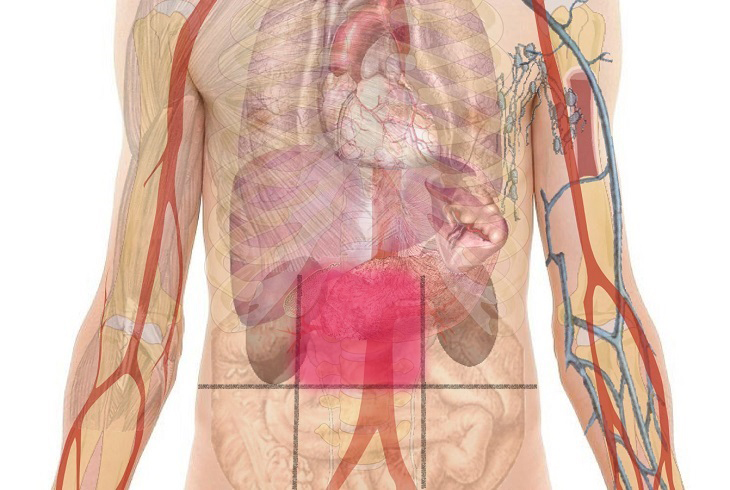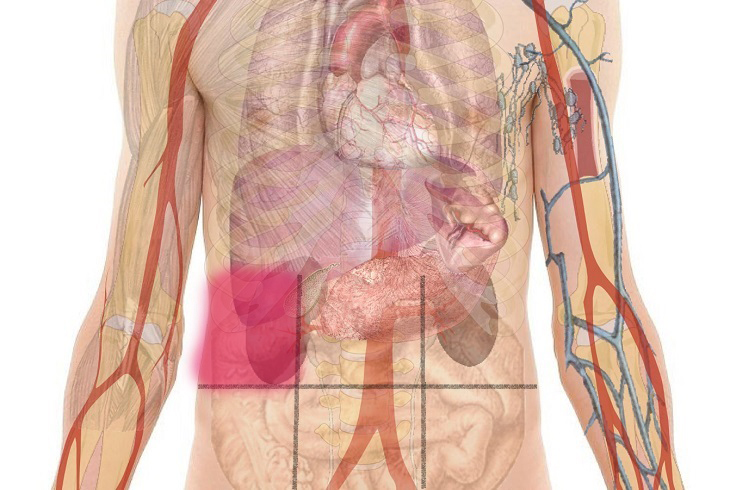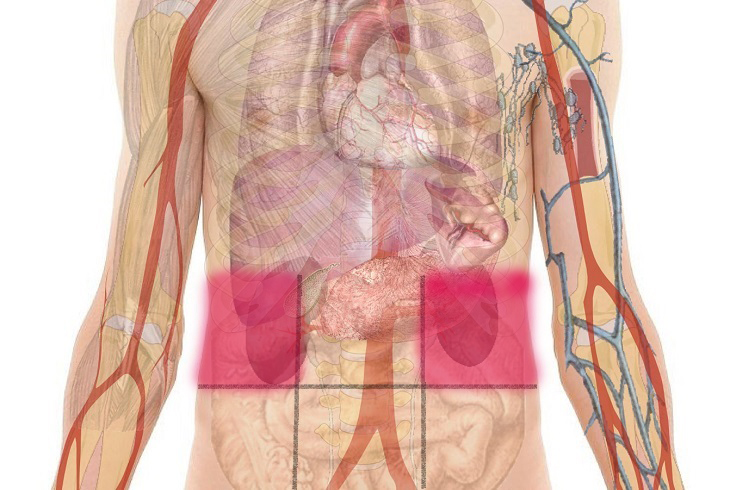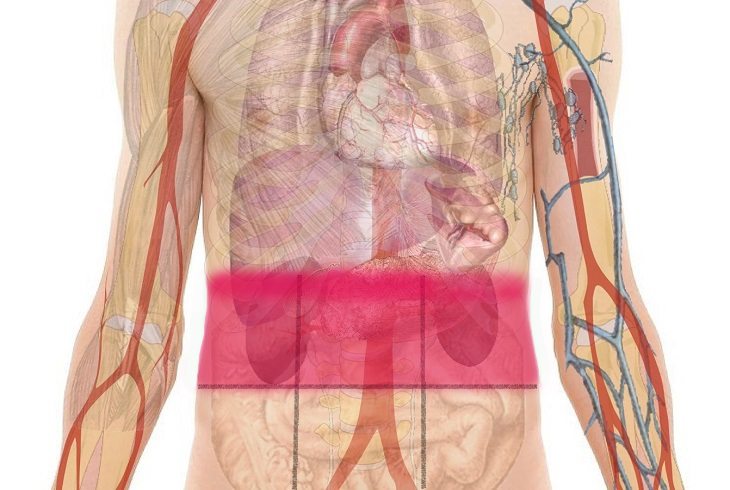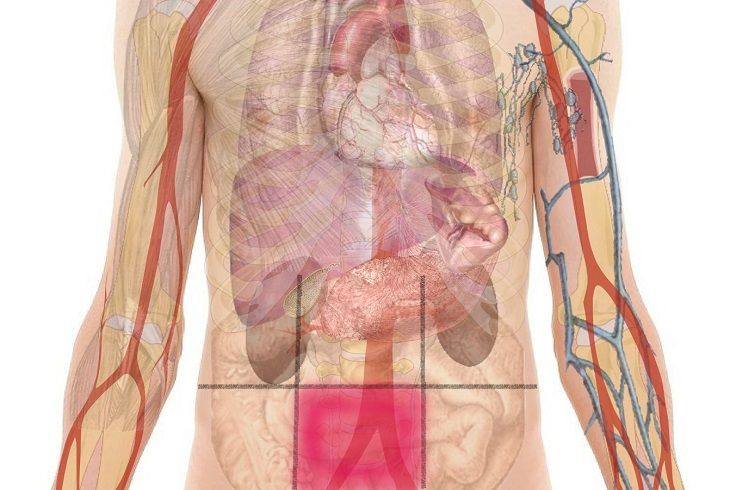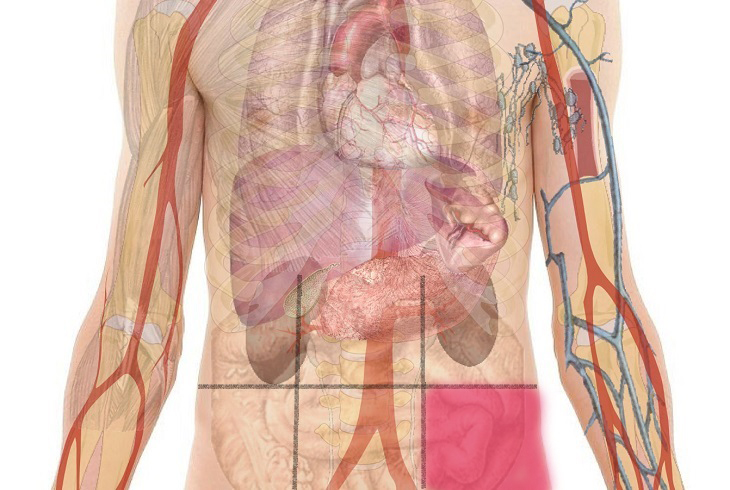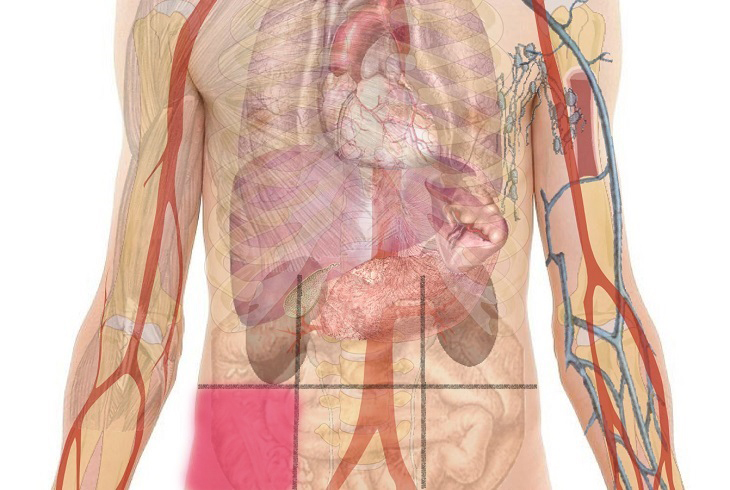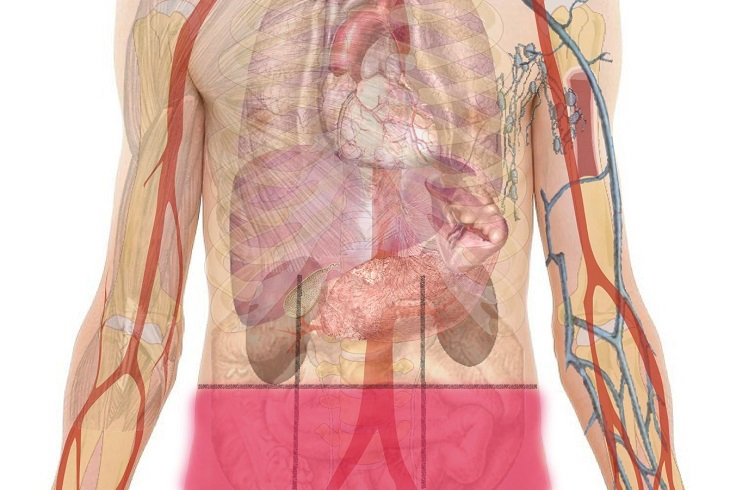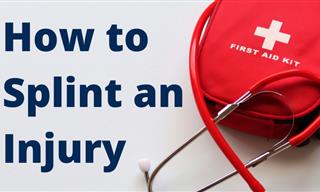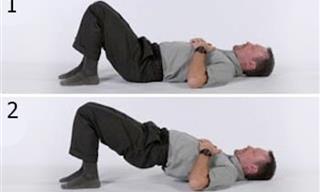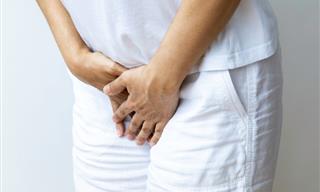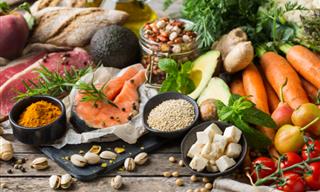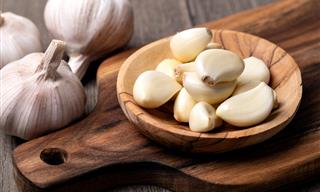Our stomach is not only a place where we digest food, it is a huge area in the body that contains crucial organs and is filled with pain receptors. Pain in our abdomen can be a common health issue that we all experience from time to time. However, it's important to note that some of these pains may indicate a serious problem and cannot be relieved with traditional remedies or hot drinks. It's crucial to identify the cause of discomfort and seek proper medical attention. To help with this, we have prepared a guide that outlines possible causes of pain in 8 different areas of the abdomen, so next time you feel pain in your stomach, you can use this guide to help you figure out what might be the problem.
1. Middle upper abdomen
If you experience pain in the middle upper abdomen, it could indicate stomach problems and various medical tests are required to diagnose the exact problem due to the similarity of symptoms.
- Inflammation of the stomach lining, also called gastritis, can be caused by various factors and may result in upper abdominal pain, nausea, vomiting, loss of appetite, and heartburn.
- Peptic ulcers, commonly known as ulcers, can cause abdominal pain and a "burning" sensation after eating, taking aspirin, or consuming alcohol, orange juice, or coffee. Treatment with certain foods can help alleviate ulcer symptoms.
- Diaphragmatic hernia, which causes gastroesophageal reflux leading to heartburn and bloating, can also result in stomach and chest pain. Gastroparesis, a rare phenomenon causing paralysis of the stomach, can also lead to upper abdominal pain, persistent nausea, heartburn, and feeling full all the time even though you haven't eaten.
- Pericarditis is an uncommon disease that differs from others discussed here. Although it is related to the heart, a peculiar symptom is experiencing chest pains that radiate to the upper abdomen and back, especially when lying down.
2. Right upper abdomen
When you feel a sharp pain in the upper right abdominal area, it can be challenging to locate the root cause. This pain can indicate issues in various organs such as the liver, pancreas, gallbladder, or upper digestive system. The intensity and frequency of the pain can provide clues about certain conditions.
- Sudden pains in the upper right abdomen that last for hours may signal inflammation in the gallbladder. The pain tends to extend towards the right shoulder, and the affected area feels tender. Deep breaths could worsen the symptoms.
- Gallbladder stones can cause pain in the stomach area after consuming fried and high-fat food. The pain usually subsides after a few hours.
- If you're experiencing cramps, sudden abdominal pain, and tenderness in the upper right part of the abdomen that worsens with fatty foods or alcohol consumption, your liver may be sending you a warning signal. The causes of these problems can vary from hepatitis, alcohol addiction to liver cirrhosis.
- Inflammation of the duodenum can result from bacterial or viral infections or celiac disease, causing pain and discomfort in the upper right abdominal area, vomiting, and nausea. The pain may also occur on the upper left and right sides of the abdomen.
3. Upper stomach, left and right sides
When you feel pain in the upper part of your abdomen, it could indicate various health problems. Pneumothorax, pneumonia, and pleurisy are some common conditions that can cause sudden or nagging pains in the upper right or left side of your abdomen. Keep in mind that stomach pains in these areas may not be the primary symptoms of these diseases. Shortness of breath, fever, and rapid pulse are more common symptoms.
4. The entire area of the upper stomach
If you have difficulty pinpointing the exact location of your pain, it could be due to various factors:
- Intestinal obstruction is a prevalent condition that requires immediate medical attention. It causes sudden and intense contractions in the upper abdomen. This condition may also lead to swelling.
- Pancreatitis can cause excruciating pain in the upper abdominal region that may spread to the back. Consuming fatty foods can escalate the pain, and it may get worse during meals. If you want to keep your pancreas healthy, you can check out the ten foods that are beneficial for your pancreas.
- Most people associate chest pain with a heart attack, but it can also cause pain in the left arm and upper abdomen. It is crucial to know how to stop a heart attack in the last seconds, as it can save lives.
5. Middle lower stomach
The pelvic region and lower central part of the abdomen serve as a junction for various internal systems. Pain in this area may result from issues in the urinary tract, intestines, or specific blood vessels.
- Urinary tract infections may cause pain in the pelvic and lower abdominal area, accompanied by stabbing sensations, burning, and difficulty urinating.
- Severe pain in the middle lower abdomen, radiating to the lower back, legs, and groin area, may be an indication of an abdominal aortic aneurysm.
6. Left lower stomach
Pain in the lower left abdomen may be due to diverticulitis, an inflammatory disease affecting sections of the large intestine, typically accompanied by fever, increased white blood cell count, and pain in the same area. Nausea, blood in stool, diarrhea, and constipation may also be associated with the disease.
7. Lower right stomach
Pain in the right lower abdomen can have various causes. The most common reason behind severe pain in the right lower abdomen is appendicitis, which is an inflammatory disease affecting the appendix. The pain usually starts as a dull ache in the navel region and worsens as the inflammation increases, causing the appendix to swell. The pain becomes sharper and intense when the patient moves, breathes deeply, coughs or sneezes. Along with this, other symptoms like nausea, vomiting, constipation, diarrhea, increase in body temperature, slight swelling, paleness, and inability to release gas may also occur.
8. Lower stomach, left and right
In case you experience identical pains on both sides of the lower abdomen or any of the following pains on one side, it is usually linked to issues with the reproductive system or kidneys.
- Kidney stones and pyelonephritis (kidney inflammation) are the two main causes of pain in the lower sides of the abdomen and back. Typically, the pain begins in the groin area and spreads to both sides of the lower abdomen before moving to the lower back. Patients may also experience difficulties urinating, pain during urination, and urgency to urinate. For more signs of kidney stones, click here.
- Some women may experience intense joint pain on one or both sides of the lower abdomen, accompanied by feelings of heaviness, fullness, swelling, and pressure. These symptoms can be caused by ovarian cysts.
- Tubal inflammation, caused by bacterial infection spreading from the vagina or uterus, leads to severe pain on one or both sides of the lower abdomen. The pain may be misinterpreted as appendicitis, so it is crucial to seek medical attention.
- Severe pain on both sides of the abdomen in men is often caused by an inguinal hernia, which can cause discomfort or pain in the groin and lower abdomen area, particularly while walking or lifting heavy objects.
9. Entire lower stomach area
Pain in different areas of the lower abdomen can have various causes:
- One cause, in women, is endometriosis and pelvic inflammatory disease, which can lead to mild-to-severe pain in the lower abdomen, especially during intercourse.
- Inflammatory bowel diseases can occur due to inflammation in the intestine, leading to chronic conditions such as Crohn's disease and ulcerative colitis. Symptoms include abdominal pain, weight loss, anemia, and rectal bleeding. Click here to learn more about Crohn's disease.
- Intestinal obstruction can happen in any part of the intestine, not just the upper areas. Symptoms of this condition include pain in the lower abdomen, swelling, and sensitivity.
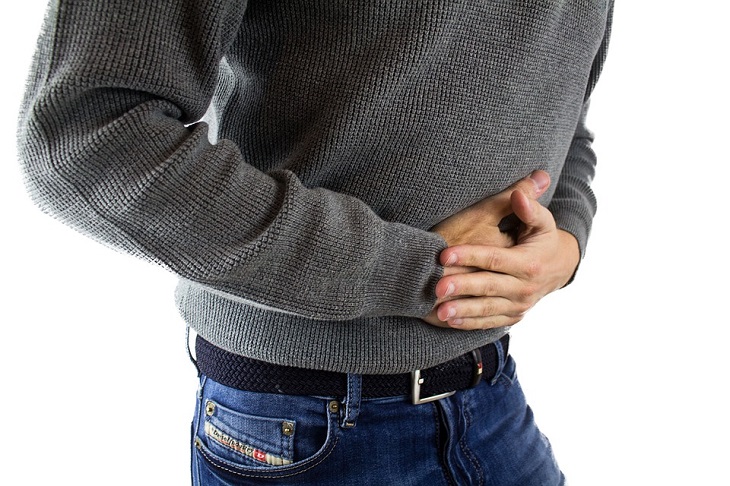
In conclusion:
The stomach is a terribly sensitive place, with many pain receptors that may indicate a number of possible problems, and yet are also connected to our mood or food. So it is always advisable not to panic at the first appearance of pain, unless it is especially strong. If it is, the best thing is to head to the nearest ER to make sure you aren't in serious danger. Use this guide to locate possible issues to talk to your doctor about, so they can send you to do tests and discover the truth. We wish you nothing but great health!
 Go to BabaMail
Go to BabaMail


